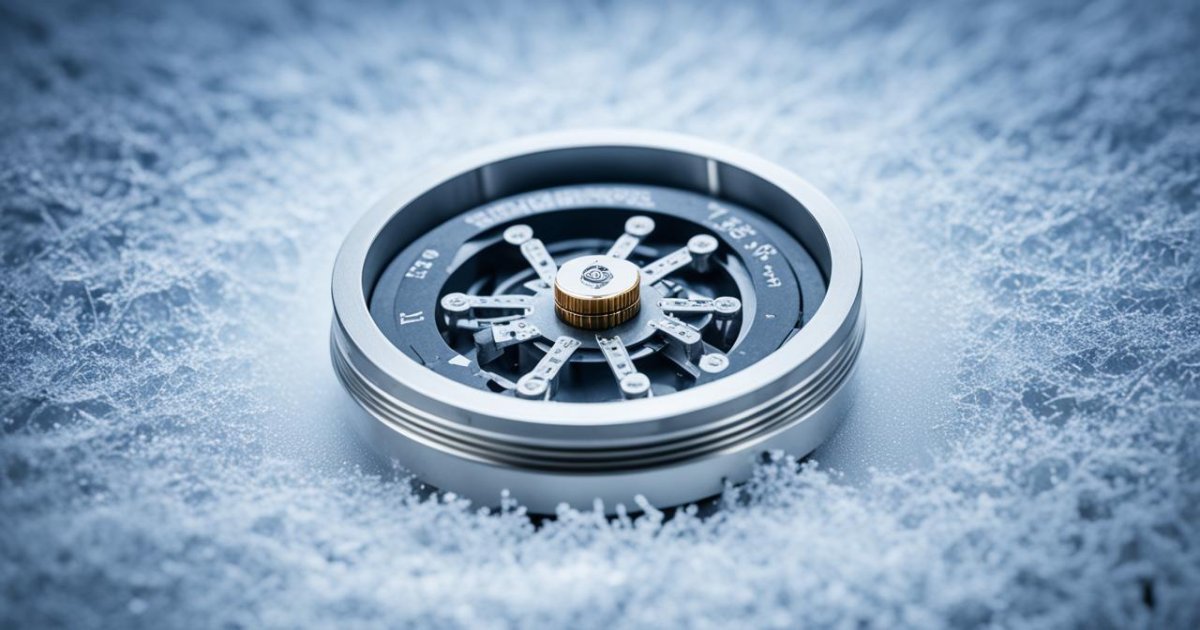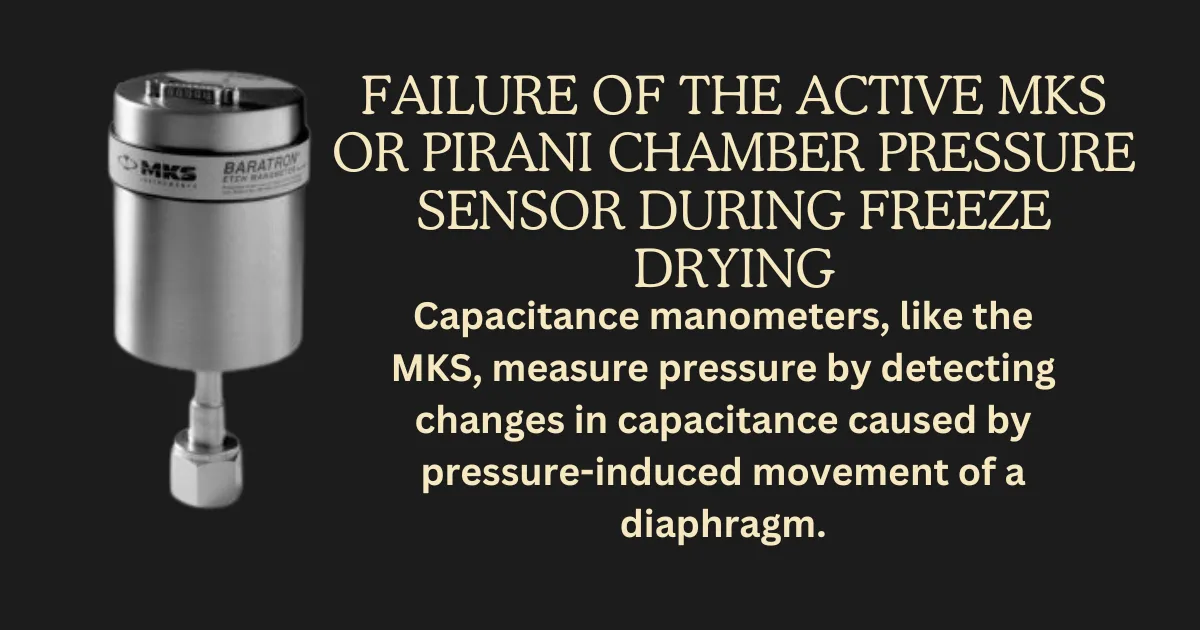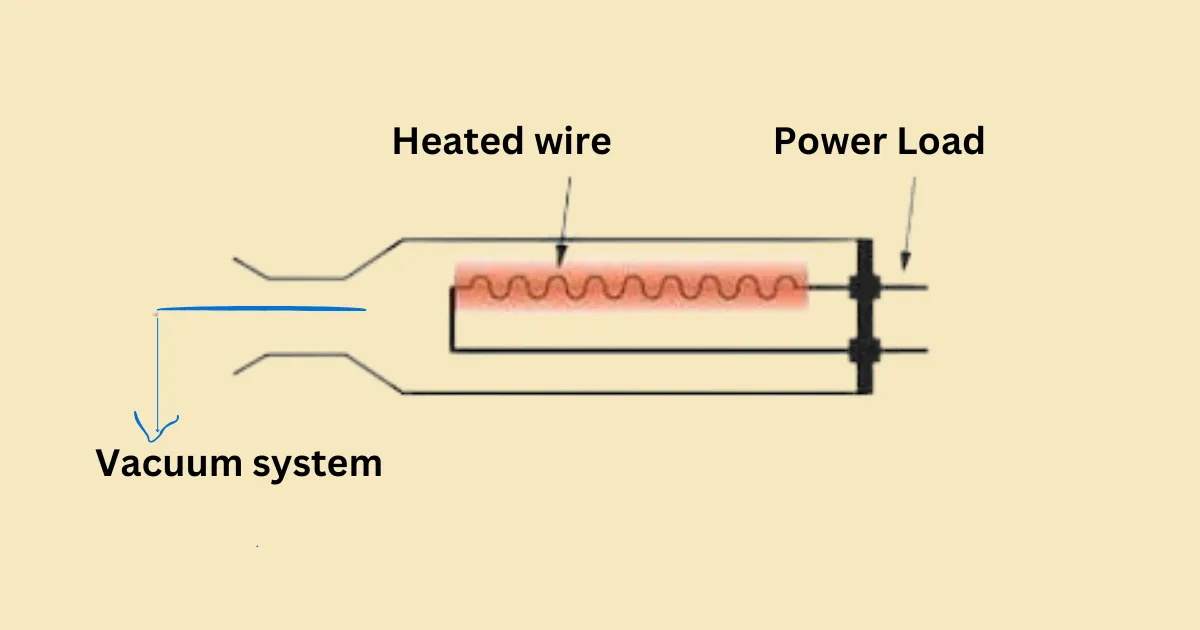Failure of an active MKS or PIRANI pressure sensor in a freeze dryer. Freeze drying is key in many industries. It needs precise pressure checks to work right. If an MKS or PIRANI gauge fails, it can mess up the whole process. This might lead to losing products and affecting their quality.
Studies show that even small changes in pressure or temperature can greatly affect the final product. This means that keeping an eye on these factors is very important.
This article will look at why MKS and PIRANI pressure sensors fail in freeze dryers. It will also cover how to fix these issues. Knowing how crucial these sensors are and the risks of failure helps keep freeze-drying processes smooth. This reduces the chance of losing products. But what happens when one of these sensors fails? Let’s dive into the details.
Key Takeaways
- Pressure sensors, like MKS and PIRANI gauges, are key in freeze-drying.
- If a pressure sensor fails, it can ruin the freeze-drying process. This might mean losing products and affecting their quality.
- It’s vital to keep an eye on pressure and temperature during the primary drying stage. This helps keep the freeze-dried products stable and ready to use.
- Knowing why pressure sensors fail and how to fix them helps keep freeze-drying processes running smoothly.
- Looking after and calibrating pressure sensors is important to avoid problems in freeze-drying.
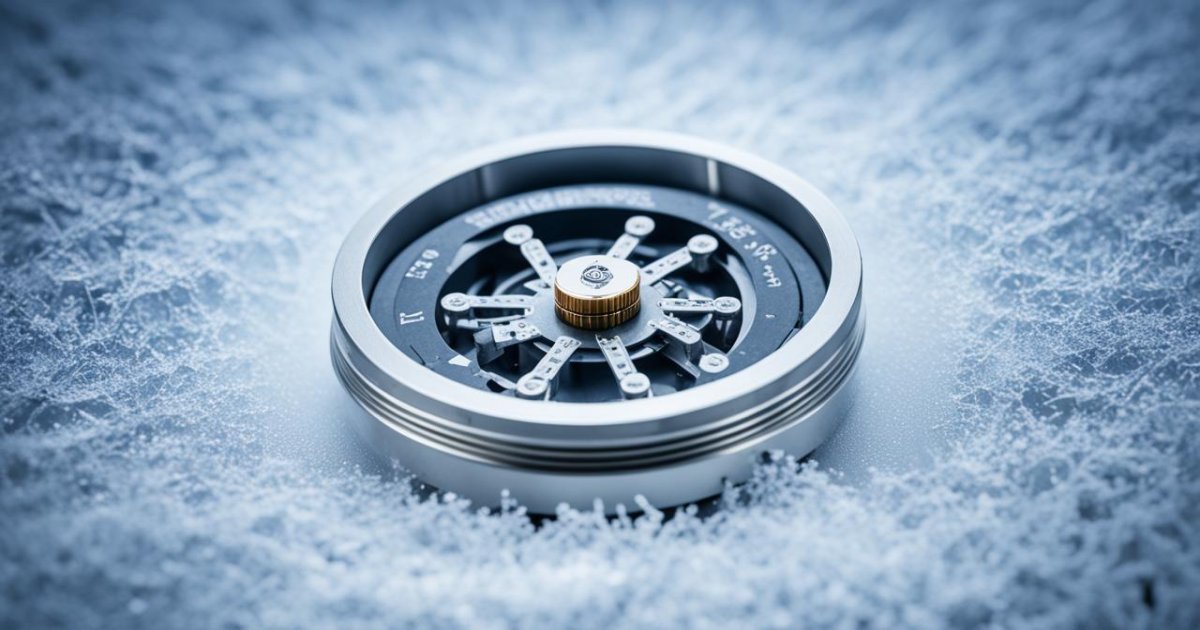
Failure of an active MKS or PIRANI Pressure Sensor in Freeze Dryer
In freeze drying, MKS and PIRANI sensors are key. They keep an eye on the chamber pressure. This is vital for the freeze-drying process.
Types of Pressure Sensors in Freeze Drying
MKS sensors are known for their accuracy and reliability. They work well in low-pressure ranges, making them perfect for vacuum use. They measure pressure by watching how a diaphragm moves under pressure, changing the capacitance between it and an electrode.
PIRANI sensors measure vacuum pressure by looking at gas thermal conductivity. They have a heated filament whose resistance changes with the gas around it, showing pressure changes.
Functionality of Pressure Sensors
MKS sensors work by tracking the chamber’s pressure with a diaphragm that bends under pressure. This bending turns into an electrical signal for the control system. PIRANI sensors use a heated wire whose resistance shifts with gas presence. With less gas, the wire heats up and its resistance goes up, which is measured.
Common Issues with Pressure Sensors
MKS sensors can fail due to electrical problems, contamination, or wear and tear. This can make readings wrong or make the sensor stop working. PIRANI sensors might face wire contamination, calibration issues, or electrical faults, hurting their accuracy.
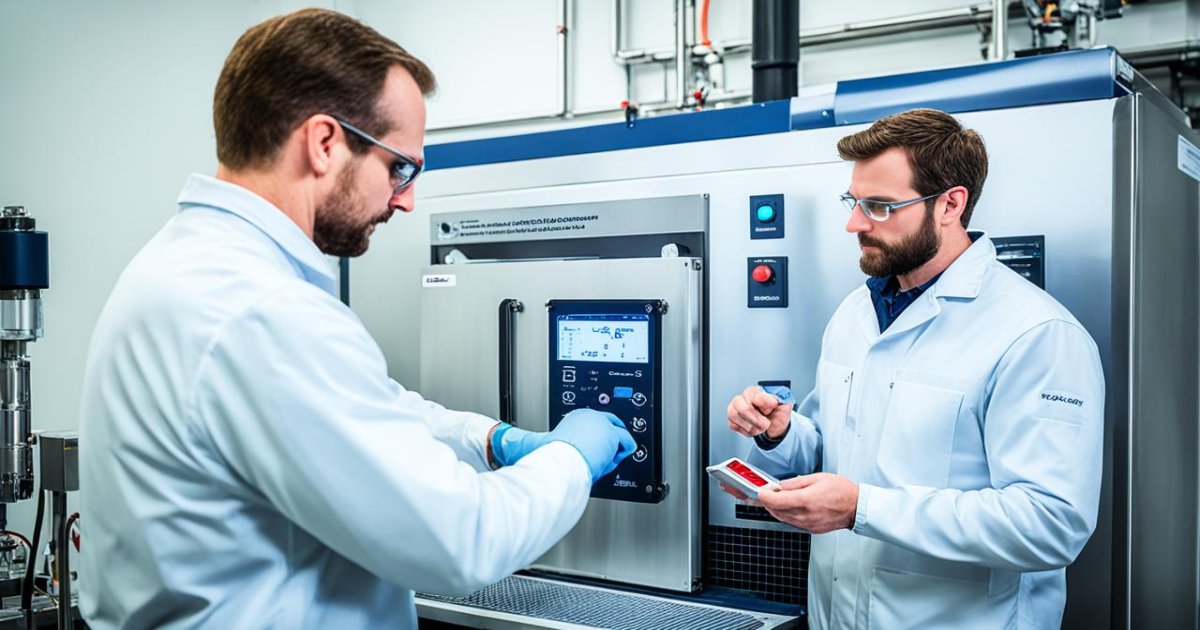
Electrical failures can come from power surges, bad wiring, or environmental factors like moisture and dust. Signs of failure include weird readings, no readings, or data that doesn’t make sense. This can mess up freeze-drying and cause product loss.
Troubleshooting and Diagnostics
To fix a sensor failure, first figure out what’s wrong. Check the electrical connections, look for damage on the sensor, and check the system logs for errors. Fixing the issue might mean testing the sensor, calibrating it, or replacing broken parts. Once fixed, reset the sensor by setting it up right and making sure it’s calibrated. It’s important to set the sensor correctly so it works well and gives accurate readings.
Identifying the Problem: To troubleshoot a sensor failure, operators must first identify the problem. This can involve checking the electrical connections, examining the sensor for physical damage, and reviewing the system logs for error messages.
Steps to Diagnose Sensor Issues: Diagnostic steps may include testing the sensor in a controlled environment, calibrating the sensor, and replacing faulty components.
Resetting the System
- Procedure to Reset Active Sensor: Once the problem is rectified, the active sensor can be reset. This involves selecting the sensor in the general process parameter settings and ensuring it is properly calibrated.
- Importance of Correct Parameter Selection: Selecting the correct parameters is essential to ensuring the sensor operates within its specified range and provides accurate readings.

Types of Pressure Sensors in Freeze Drying
In the world of freeze drying, two primary types of pressure sensors are commonly used: MKS and PIRANI sensors.
| Sensor Type | Key Characteristics |
|---|---|
| MKS Sensors |
|
| PIRANI Sensors |
|
“Backup sensors and control systems are crucial for maintaining continuous operation and preventing product loss due to sensor failures.”
MKS Pressure Sensors
Monitoring of the Whole Batch Using MKS and Pirani Sensors
Monitoring is crucial in lyophilization, ensuring product quality and process efficiency. Among the tools used, MKS and Pirani sensors play significant roles in assessing the dynamics of the entire batch.
MKS sensors are known for their high accuracy and reliability. They are designed to measure low pressure ranges and are widely used in vacuum applications.
Capacitance manometers, like the MKS, measure pressure by detecting changes in capacitance caused by pressure-induced movement of a diaphragm.
- Working Principle: They use a diaphragm, whose deflection due to pressure changes alters the capacitance between the diaphragm and a fixed electrode.
- Advantages in Lyophilization: These sensors offer high accuracy and are less influenced by gas type, making them ideal for monitoring lyophilization processes.
PIRANI Pressure Sensors
PIRANI sensors, on the other hand, measure vacuum pressure by determining the thermal conductivity of the gas. They are particularly useful in low-pressure environments and provide consistent readings. Pirani gauges measure pressure based on the thermal conductivity of gases, which changes with pressure.
Working Principles of Pirani Gauge: They utilize a heated filament whose resistance varies with the thermal conductivity of the surrounding gas, reflecting changes in pressure.
Functionality of Pressure Sensors
How MKS Sensors Work: MKS sensors function by measuring the pressure of the gas within the chamber through a diaphragm that deforms under pressure. This deformation is then converted into an electrical signal, which can be read and interpreted by the control system.
How PIRANI Sensors Work: PIRANI sensors use a heated wire whose resistance changes with the amount of gas present. As the pressure decreases, the gas density drops, leading to a higher temperature and resistance of the wire, which is then measured.
Application in Freeze Drying (FD): Monitoring Chamber Pressure. Both sensors monitor chamber pressure, which is critical for maintaining the vacuum necessary for lyophilization.
Here’s a table highlighting the differences between MKS Type (Capacitance Manometer) and Pirani Gauge (PSG)
| Feature | MKS | Pirani Gauge (PSG) |
|---|---|---|
| Type | Capacitance Manometer | Thermal Conductivity Gauge |
| Measurement Principle | Measures pressure via capacitance changes | Measures pressure via thermal conductivity changes |
| Accuracy | High | Moderate |
| Precision | Excellent | Good |
| Cost | Expensive | Inexpensive |
| Dependence on Gas Type | Less dependent | Highly dependent |
| Response Time | Fast | Moderate |
| Application | Ideal for precise pressure measurements | Suitable for general pressure monitoring |
| Suitability for FD | Yes, accurate and stable | Limited due to sensitivity to gas composition changes |
| Signal Stability | High | Moderate |
| Long-term Reliability | Very reliable | Moderate |
| Environmental Sensitivity | Less affected by environmental changes | More susceptible to environmental changes |
| Maintenance | Requires periodic calibration | Low maintenance |
| Sterilization Compatibility | Compatible with most sterilization processes | Limited due to sensor construction |
| Advantages | High accuracy, stable readings | Low cost, adequate for general pressure monitoring |
| Disadvantages | Expensive, sensitive to installation environment | Less accurate and sensitive to gas type and environment |
Common Issues with Pressure Sensors
Typical Failures in MKS Sensors: Common issues with MKS sensors include electrical failures, contamination, and mechanical wear and tear. These can lead to inaccurate readings or complete sensor failure.
Typical Failures in PIRANI Sensors: PIRANI sensors can suffer from issues such as contamination of the wire, calibration drift, and electrical faults, affecting their accuracy and functionality.
Preventive Measures
Regular Maintenance Practices: Regular maintenance, including cleaning, calibration, and inspection, can prevent many common sensor failures.
Importance of Sensor CalibrationCalibration ensures that sensors provide accurate readings. Regular calibration checks can identify potential issues before they lead to failure.
Technological Advances in Pressure Sensors
New Developments in MKS Sensors: Recent advancements in MKS sensors include improved materials and designs that enhance accuracy and durability.
Innovations in PIRANI Sensors: Innovations in PIRANI sensors focus on better thermal management and enhanced signal processing for more reliable readings.
Conclusion
Freeze drying is a critical process that relies heavily on the accurate functioning of pressure sensors. Electrical failures in MKS or PIRANI sensors can have significant impacts. Ensuring continuous and accurate sensor readings is key to maintaining product quality and process efficiency.
Monitoring with MKS and Pirani sensors enhances lyophilization processes. MKS sensors provide accuracy, while advancements in Pirani sensors improve their reliability. Selecting the right sensor depends on specific application needs and budget considerations.
What causes an MKS sensor to fail?
MKS sensors can fail due to electrical issues, contamination, and mechanical wear and tear. Regular maintenance and proper handling can mitigate these risks.
Can freeze-drying continue with a failed sensor?
Yes, if the system has backup sensors and a robust control system, freeze drying can continue even if one sensor fails.
How can I prevent sensor failure in my system?
Regular maintenance, proper calibration, and keeping the sensors clean and free from contamination are key practices to prevent sensor failure.
